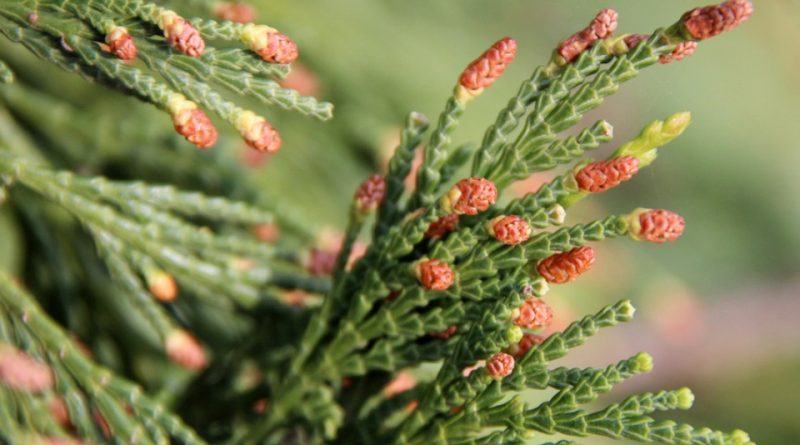Calocedrus decurrens
Calocedrus decurrens
California cedar or incense cedar, or even dwarf cedar (Calocedrus decurrens (Torr.) Florin) is an arboreal species belonging to the Cupressaceae family.
Systematics –
From a systematic point of view it belongs to the Domain Eukaryota, Kingdom Plantae, Subarranean Tracheobionta, Superdivisione Spermatophyta, Division Pinophyta, Classe Pinopsida, Order Pinales, Family Cupressaceae, Subfamily Cupressoideae and then to the Genus Calocedrus and to the C. Citrine species.
Etymology –
The term Calocedrus comes from the Greek κᾰλος calós, beautiful and Cedrus, the Pinaceae tree: that is, beautiful cedar. The specific epithet decurrens derives from decurrancy, run downward, decurrent: for the prostrate bearing that runs along the substrate.
Geographic Distribution and Habitat –
The Calocedrus decurrens is an arboreal species native to western North America, with an area in the Sierra Nevada, California, which stretches from central west Oregon to the north to the northern Mexican state of Baja California in the south to reach the east. western regions of Nevada. It grows at altitudes between 50 and 2900 m s.l.m .. In Europe it was introduced around the mid nineteenth century for ornamental purposes.
Description –
The Calocedrus decurrens is a tree up to 40 meters tall, with pyramidal and slender shape, dark green foliage coloring and with obliquely and vertically oriented branches. The trunk is straight and columnar, with brown-reddish rind, scaled in long paper strips that with the passing of the years slit longitudinally assuming a greyish color. The leaves are squamiform, appressed to the twigs in verticils of four and with acute triangle apex with elongated base that runs down to the node hidden between the apices of the verticill below. When leaves are rubbed they give off a pleasant and intense resinous aroma. It has yellow, small and terminal male cones; the female ones, lateral, are transformed into ovoid-elongated (2.5 cm), reddish-brown galbuli at maturity with six scales.
Cultivation –
The Calocedrus decurrens is a plant that prefers an exposure in which it receives a direct irradiation only in the hours when the sun is less hot. For this reason we need to plant the specimens of this variety in semi-shaded places, especially in the hottest places on the peninsula; in general, the calocedrus can tolerate adverse weather conditions without problems, such as the scorching heat and the harsh winter cold. For this reason the California cedar is widespread throughout the peninsula.
Uses and Traditions –
The Cypress of California, in the areas of origin forms mountain forests in association with the Lawson cypress, the Douglasia, the redwoods and several other deciduous trees.
In Italy we find it in parks belonging to vintage villas, contexts of celebratory planting or urban furniture and in private land.
The wood of Calocedrus decurrens is one of the main materials used in the United States for making pencils because it is soft and easy to temper. It also has a good resistance to deterioration and therefore shows a long life; for this reason it is used for the realization of wooden elements for outdoor use. Also in the United States its wood, of brownish-yellow color, resistant and perfumed, is used in carpentry and in the construction of furniture.
Preparation Mode –
The Cypress of California, in addition to the use for timber has no other relevant applications of food or phytotherapeutic nature.
Guido Bissanti
Sources
– Acta Plantarum – Flora of the Italian Regions.
– Wikipedia, the free encyclopedia.
– Treben M., 2000. Health from the Pharmacy of the Lord, Advice and experience with medicinal herbs, Ennsthaler Publisher
– Pignatti S., 1982. Flora of Italy, Edagricole, Bologna.
– Conti F., Abbate G., Alessandrini A., Blasi C. (ed), 2005. An annotated checklist of the Italian vascular flora, Palombi Editore.
Warning: Pharmaceutical applications and alimurgical uses are indicated for informational purposes only and do not in any way represent a medical prescription; there is therefore no liability for their use for curative, aesthetic or food purposes.


